St Andrews, Bandra’s oldest parish celebrates turning 400 with a first-of-its-kind guidebook showcasing its rich heritage
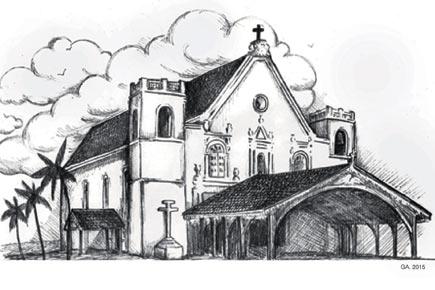
St Andrews
Imagine a scene from Bandra, today’s nightlife hub, back in the late 1800s. The Arabian Sea lashes a rocky, palm-fringed shore that lines the Church of St Andrew. Inside the complex, a group of parishioners gather around the Cross of Santa Anna as a Jesuit padre explains the Biblical significance of each of the 45 symbols carved on it. The Portuguese church watches over not just the faithful but over the suburb of Bandora (its name according to the earliest written records), then the pride of the Island of Salsette.
ADVERTISEMENT

(Right) Original church, by Gynelle Alves; (left) Post extension, by Vikas Dilawari
Flash forward to November 2015. Barring a few million residents, an extended church building, a statue of Christ The King in the compound, luxury towers and whizzing traffic, the frame could be recreated. Well, almost.
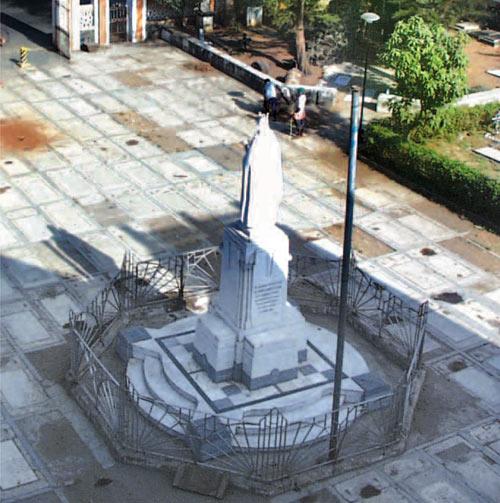
A Bandra parishioner, Lourdes Fernandes (later Netto) designed the statue of Christ the King installed inside the church complex. Pic Courtesy/Herman Rodrigues
This Sunday, on Christ the King’s feast, after Bishop Dominic Savio Fernandes preaches the sermon and gives a Eucharistic blessing, he will release St Andrew By-The-Sea: A Guide to the Art and Times of the Church. The guidebook's launch will kick off Bandra’s earliest still standing church’s 400-year celebrations.
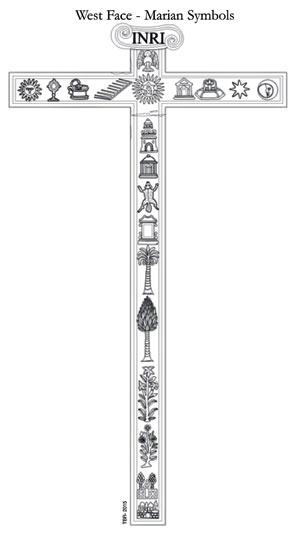
An illustration highlighting the West Face of the Stone Cross featuring Marian Symbols. INTACH will help restore this cross. Illustration Courtesy/The Bus Ride
Bandra boys Denzil Smith and Roger Pereira will read from the guide. “It’s important to give back to the community,” says Herman Rodrigues, of the historical group, 400th anniversary celebrations, that’s been working overtime to complete the guide like countless Bandra residents.
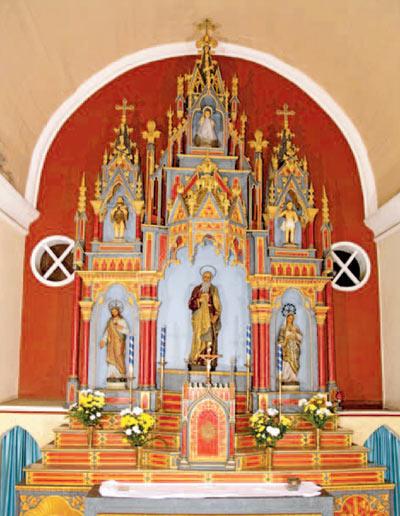
The main altar was built in 1906 as the earlier one was destroyed by termites. The life-sized statue of St Andrew (centre) dominates the altar that is made of wood and built on a brick base paved with marble. Pic Courtesy/Fr Nigel Barrett
“The guide is the start,” he quips, referring to year-long celebrations. As we flip through an advance copy of the 60-pager, the attention to detail is evident as is the meticulous research.
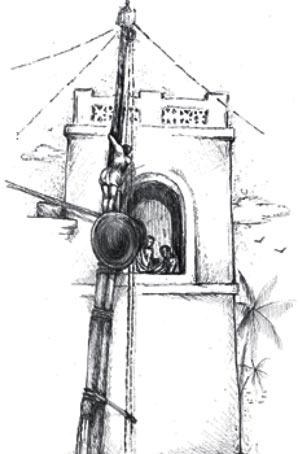
In the past, the three church bells were used to sound an alarm and call parishioners to assemble. There is a detailed report of an attack on February 27, 1700 when an Arab expedition from Muscat comprising 2000 men in seven ships raided Versova. They slaughtered a small Portuguese garrison before moving southward to ravage three coastal villages up to Bandra. Illustration/ Gynelle Alves
Dates had to be verified, timelines crosschecked. Portuguese scholars like Dr Paolo Varela Gomes, Dr Sidh Mendiratta, Professor Vitor Serrao and Dr Paolo Aranha helped with translations and interpretations.
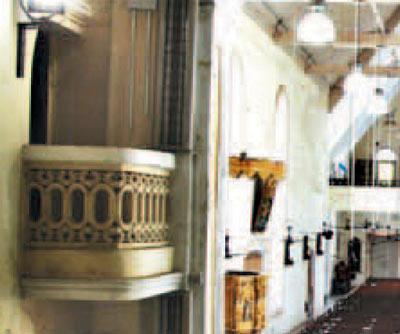
The church has a ‘Juliet Balcony’ in the sanctuary from where indisposed priests attended mass out of view of the rest of the faithful in church. Pic Courtesy/Fr Nigel Barrett
These included the translation of the 1616, and 1669 Jesuit Letters by Dr Mendiratta and the interpretations of the symbols on the stone cross by Dr Aranha. Apart from Bandra citizens who dug deep into their family archives, documents were sourced from Pune’s Athenaeum Library, Rome’s Jesuit Archives and St Xavier’s College’s Heras Institute. After 15 months of labour, it was ready.
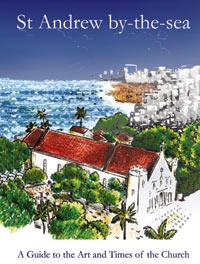
The book (R200) will be released on November 22 at St Andrew Church grounds. Service begins at 6 pm. It will be on sale, and in the parish office thereafter. Cover/ Gynelle Alves
Here’s our pick of fascinating facts from the pages.
>> It is Bandra’s oldest standing church, but not the first. The Church of St Anne was a sanctuary and strategic fortification built around 1575, 25 years before St Andrew. In 1739, with the assent of the Portuguese Captain-General, the British rulers of Bombay destroyed St Anne's to prevent it from serving as a base for the Marathas who occupied Salsette Island.
>> According to legend, when St Andrew was to be crucified, he asked that he not be hung on a conventional cross. He felt he was unworthy of dying on the same cross as his Master (Jesus Christ). An X-shaped cross was fashioned, which since has been associated with St Andrew.
>> The Stone Cross bears 45 carvings. It was carved in 1871 by local artisans, possibly using stone from a quarry in Vile Parle, Dongri or Bassein.
Information courtesy: St Andrew-by-the-sea
Architecturally speaking
Despite the major extension carried out in the 1960s, the entire original façade of this Baroque-styled church was replicated.
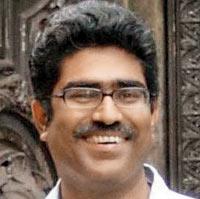
The porch was removed and the church walls were extended, ensuring its historic continuity. This was a great success at a time when there was no heritage committee to oversee matters. The church more or less retains its structure from the 1700s. — Vikas Dilawari, consultant architect
 Subscribe today by clicking the link and stay updated with the latest news!" Click here!
Subscribe today by clicking the link and stay updated with the latest news!" Click here!






